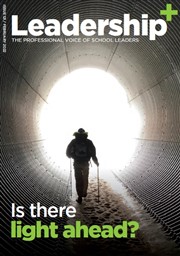Cost-cutting scandal of our school buses
- Published: 11 August 2005
Secret memos show money, not safety, the main reason for delays in introduction of seat belts
THE Government put costs before safety on school buses for years, startling new documents reveal.
And thousands of pupils will go back to school next month on overcrowded vehicles as promised new buses won't be ready.
Documents seen by the Irish Independent confirm the Department of Education and Science was pushing for massive cutbacks in the school bus system before the Navan tragedy last May.
They show costs, and not safety, were the main reason for delays in the introduction of seat belts before now.
Officials saw no need to introduce safety belts or change the controversial 3-for-2 rule (three pupils for two seats) even though they acknowledged 11 students had been killed on buses in the previous decade.
That was prior to the Navan school bus tragedy in which a further five teenage girls were killed.
Since then Education Minister Mary Hanafin and junior minister Sile de Valera have announced the 3-for-2 rule is being phased out.
However, it was learned separately last night that when schools re-open in three weeks time, thousand of post-primary pupils will still be seated on a 3-for-2 basis as additional buses will not be available in time.
The documents, released under the Freedom of Information Act, show that as far back as 2002, officials were devising ways of trying to cut costs on the school transport system.
They proposed:
- Charging primary school students.
- Increasing the cost of school bus tickets by up to 30pc.
- Getting rid of free tickets for children of medical card holders.
- Reducing some special needs services and ending others.
The documents also show Bus Eireann tested a new state-of-the-art bus in schools in Navan with a host of safety features, including seat belts and a seat for every child, just four weeks before the tragedy.
Since 2002, department officials had been debating ways of reducing costs and increasing revenue to pay for the system.
They warned of huge cost overruns with school transport due to increasing contractor costs, improvements to services for special needs pupils and escorts, minor improvement to mainstream services and the increase of all-Irish and multi-denominational schools.
In a document headed 'Proposals to Reduce Expenditure for 2004' officials proposed cost savings of almost €10m.
These included withdrawing escorts and transport grants from special needs students.
In other documents, officials proposed introducing a €20-per-term charge for primary school students, and increasing the cost of tickets by 20pc to 30pc for second level school students.
Getting rid of the medical card exemption would raise about €1.8m, they noted.
They also proposed stopping buses for special needs students in July and August to save €300,000.
The documents reveal that costs for the school bus scheme were rocketing while fewer students were being served.
A note prepared by senior officials for the Taoiseach in May this year showed that 160,000 students were carried on school buses in 1997 at a cost of just €49.5m. However, this year an estimated 138,000 students would be carried at a cost of more than €116.5m.
Services for 8,500 special needs students were costing about €35m annually. This represented 30pc of the overall budget for just 6pc of the students.
In a note for Education Minister Mary Hanafin following the Navan tragedy, senior officials told her they were considering options to phase out the three-for-two seating arrangement.
In an internal memo marked 'Safety Issues' sent on August 20, 2003, officials noted that the probability of a fatal accident was 120,000 times lower in a bus than in other forms of transport.
However, the memo warned there was "some evidence that the vicinity of a school bus which is picking up and dropping off school children poses particular risk for the children".
The memo said an extra 880 buses would be required at a cost of €57m to phase out the three-for-two seats exemption. A further €15m would be needed for drivers wages.
Retro-fitting seat belts on old buses would cost about €38,000 per bus.
Repainting buses bright colours and installing new flashing warning lights would cost €6.9m.
Currently there are 652 buses in the Bus Eireann school bus fleet, with 2,380 private buses contracted to provide services through the school year.
The average age of a Bus Eireann school bus is 16 years.
Bus Eireann has begun the process of getting 130 extra large buses - 50 for next term - while an additional 250 minibuses are due to be hired from the private sector.
The company could not say last night how many extra buses would be available on the day the schools re-opened.
Click here to access the article on the Irish Independent website - www.unison.ie



















































